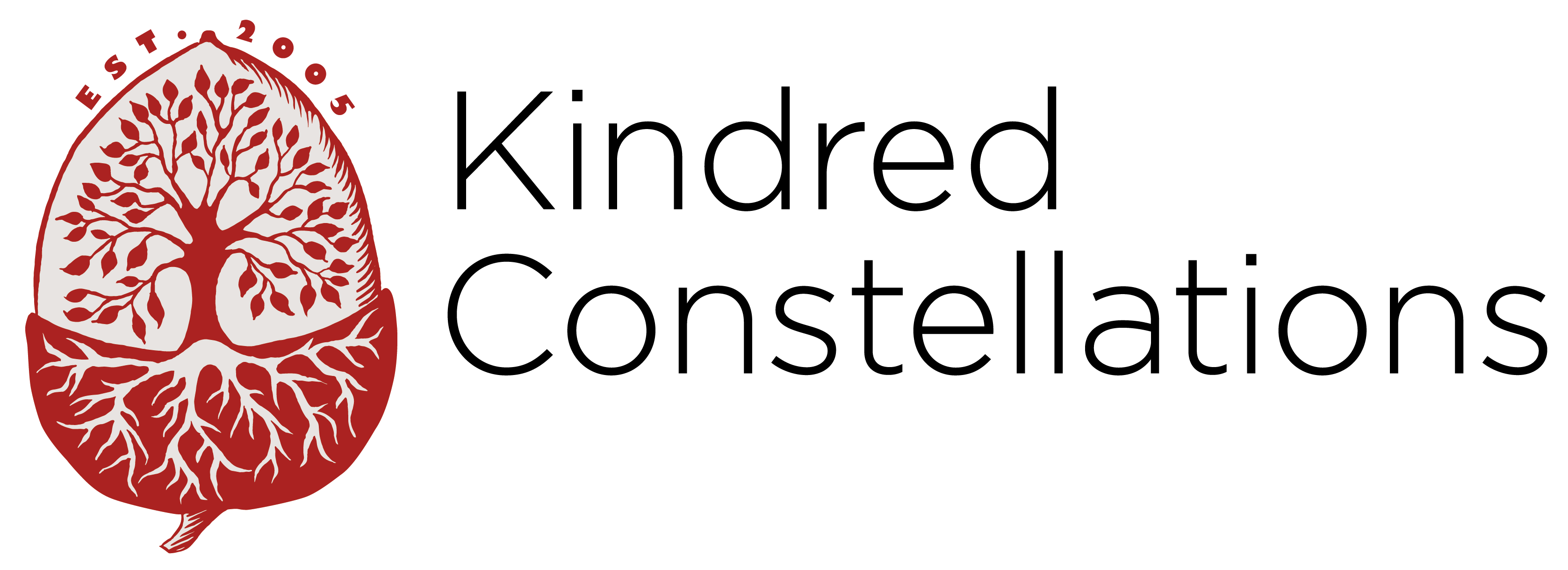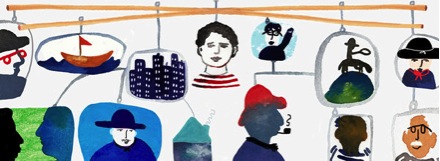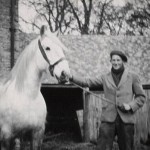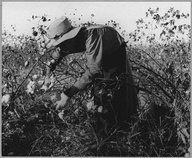Marcel Proust – In Search of Lost Time
The Buffalo
Last month I was working with Dawn Eagle Woman. We had a very busy time with Wisdom Circle Constellation workshops around the country and her own evening gatherings and sessions. Enriching and intense, with moments of joy and much laughter too.
Our workshops together are a fusion of our two ways of working. I would do the constellating and Dawn brought her shamanic practice through holding space. She also opened and closed each circle with a round ‘held’ by one of the beautiful talking sticks that she makes. The practice of working with a talking stick requires our agreement to two disciplines. The first is that we remain silent whilst another holds the stick and then, when our turn arrives, we are asked to speak first our name and then our deepest truth… this is not the words hovering around in our throat, but the ones that emerge with strength and clarity from the belly.
The talking sticks are made from wood, crystal and horn, and a particularly lovely one had a collar of buffalo fur. When this stick was chosen for the round Dawn would sometimes tell us about the buffalo of Wyoming where she lives. Her story goes something like this…
“… There are often terrible storms on the plains of Wyoming. The skies darken on the horizon and the pressure builds. As the storm approaches the creatures that live underground find safety, and the birds take to the canopy of the trees to find shelter, but the hoofed animals who can’t find shelter on the ground sometimes try to out run it… in terror they flee, and as they run and run the storm pursues them. Pretty soon exhaustion sets in, and then their final collapse. In the spring their bodies are often found as the snow begins to melt.
But the buffalo does things differently. When he feels the storm approaching he turns to face it. He stands firm and then drops down into his heart, and he begins to walk. He walks and walks right into the eye of the storm… while the wind and rain and thunder and lightening rage all around him he keeps on walking. Until, in time, he emerges right out the other side and feels the sun on his face again and the warmth of it on his back… and he knows he is free….”
I was deeply touched by this story and feel it is a wonderful metaphor for our personal healing work. When we turn and face our fears we often emerge in a blessed place, in touch with the gift of our freedom and the wisdom gained.
The buffalo drawing is done by my little nephew Manu Kay (age 8). Knowing nothing of the stick or the story he asked his mum Yasmin to give it to Dawn when she came over for lunch…. I took a copy as I loved it!
Dawn will be back in the UK in the late autumn. Notification of her programme will follow nearer the time. If you are interested in choosing a stick for yourself then take a look at Dawn’s website.
Stories & Constellations
When describing the constellation process at the beginning of a workshop I might say something like: ‘we start the work with a conversation… first, we will talk together until we have gently uncovered your deepest longing, your heart’s desire – the place of your soul’s yearning’. (The soul’s voice often has touching simplicity and it might answer… ‘I wish to belong’, ‘I’d like to feel seen by my mother’, ‘I long to feel good enough’, ‘I want to support my daughter’s wellbeing, but I am full of fear’). I then continue… ‘as this conversation progresses we will be raising the bow and pulling back the arrow that contains the power of your intention… this is the quality of energy that’s needed to support constellation work’.
I will usually go on to explain to the group: ‘ And then we will need to gather very factual information about your family. I will need to know who is there, who is included, and sometimes more importantly, who is hidden or forgotten. I need to know where your ancestors came from… what countries and climates flow in your veins. And a little about the personal and social traumas that have their place in the life stories of yourself and your family – the wars, famines, murders, pogroms, floods, losses, acts of fate and acts of great courage…and of course both the simple and the extraordinary feats of survival. Tell me a little about where you come from.’
Over the years, I have developed a kind of reverential awe for human greatness and the extraordinary qualities and resources of the human spirit. I’m touched again and again by the prevailing goodness that informs and cradles our hope, and drives us to make good – even, or maybe especially, of great horrors. I have learnt that I will never hear what I expect, that judgments count for nothing, and get me nowhere and that every single person is surprising.
Stories are wonderful, and being the recipient of a life story can take us from feelings of great compassion and empathy to our own place in the greater whole. And that is a gift that we can all freely give each other.
Here is an article that appeared in the New York Times last month which is connected to this theme. It discusses some recent research that has identified the connection between a strong family narrative and our ability to survive the ups and downs of life . Have a read!
The Stories That Bind Us
Families may want to create a mission statement similar to the ones many companies use to identify their core values.
By BRUCE FEILER
Published: March 15, 2013
I hit the breaking point as a parent a few years ago. It was the week of my extended family’s annual gathering in August, and we were struggling with assorted crises. My parents were aging; my wife and I were straining under the chaos of young children; my sister was bracing to prepare her preteens for bullying, sex and cyberstalking.
Sure enough, one night all the tensions boiled over. At dinner, I noticed my nephew texting under the table. I knew I shouldn’t say anything, but I couldn’t help myself and asked him to stop.
Ka-boom! My sister snapped at me to not discipline her child. My dad pointed out that my girls were the ones balancing spoons on their noses. My mom said none of the grandchildren had manners. Within minutes, everyone had fled to separate corners.
Later, my dad called me to his bedside. There was a palpable sense of fear I couldn’t remember hearing before.
“Our family’s falling apart,” he said.
“No it’s not,” I said instinctively. “It’s stronger than ever.”
But lying in bed afterward, I began to wonder: Was he right? What is the secret sauce that holds a family together? What are the ingredients that make some families effective, resilient, happy?
It turns out to be an astonishingly good time to ask that question. The last few years have seen stunning breakthroughs in knowledge about how to make families, along with other groups, work more effectively.
Myth-shattering research has reshaped our understanding of dinnertime, discipline and difficult conversations. Trendsetting programs from Silicon Valley and the military have introduced techniques for making teams function better.
The only problem: most of that knowledge remains ghettoized in these subcultures, hidden from the parents who need it most. I spent the last few years trying to uncover that information, meeting families, scholars and experts ranging from peace negotiators to online game designers to Warren Buffett’s bankers.
After a while, a surprising theme emerged. The single most important thing you can do for your family may be the simplest of all: develop a strong family narrative.
I first heard this idea from Marshall Duke, a colorful psychologist at Emory University. In the mid-1990s, Dr. Duke was asked to help explore myth and ritual in American families.
“There was a lot of research at the time into the dissipation of the family,” he told me at his home in suburban Atlanta. “But we were more interested in what families could do to counteract those forces.”
Around that time, Dr. Duke’s wife, Sara, a psychologist who works with children with learning disabilities, noticed something about her students.
“The ones who know a lot about their families tend to do better when they face challenges,” she said.
Her husband was intrigued, and along with a colleague, Robyn Fivush, set out to test her hypothesis. They developed a measure called the “Do You Know?” scale that asked children to answer 20 questions.
Examples included: Do you know where your grandparents grew up? Do you know where your mom and dad went to high school? Do you know where your parents met? Do you know an illness or something really terrible that happened in your family? Do you know the story of your birth?
Dr. Duke and Dr. Fivush asked those questions of four dozen families in the summer of 2001, and taped several of their dinner table conversations. They then compared the children’s results to a battery of psychological tests the children had taken, and reached an overwhelming conclusion. The more children knew about their family’s history, the stronger their sense of control over their lives, the higher their self-esteem and the more successfully they believed their families functioned. The “Do You Know?” scale turned out to be the best single predictor of children’s emotional health and happiness.
“We were blown away,” Dr. Duke said.
And then something unexpected happened. Two months later was Sept. 11. As citizens, Dr. Duke and Dr. Fivush were horrified like everyone else, but as psychologists, they knew they had been given a rare opportunity: though the families they studied had not been directly affected by the events, all the children had experienced the same national trauma at the same time. The researchers went back and reassessed the children.
“Once again,” Dr. Duke said, “the ones who knew more about their families proved to be more resilient, meaning they could moderate the effects of stress.”
Why does knowing where your grandmother went to school help a child overcome something as minor as a skinned knee or as major as a terrorist attack?
“The answers have to do with a child’s sense of being part of a larger family,” Dr. Duke said.
Psychologists have found that every family has a unifying narrative, he explained, and those narratives take one of three shapes.
First, the ascending family narrative: “Son, when we came to this country, we had nothing. Our family worked. We opened a store. Your grandfather went to high school. Your father went to college. And now you. …”
Second is the descending narrative: “Sweetheart, we used to have it all. Then we lost everything.”
“The most healthful narrative,” Dr. Duke continued, “is the third one. It’s called the oscillating family narrative: ‘Dear, let me tell you, we’ve had ups and downs in our family. We built a family business. Your grandfather was a pillar of the community. Your mother was on the board of the hospital. But we also had setbacks. You had an uncle who was once arrested. We had a house burn down. Your father lost a job. But no matter what happened, we always stuck together as a family.’ ”
Dr. Duke said that children who have the most self-confidence have what he and Dr. Fivush call a strong “intergenerational self.” They know they belong to something bigger than themselves.
Leaders in other fields have found similar results. Many groups use what sociologists call sense-making, the building of a narrative that explains what the group is about.
Jim Collins, a management expert and author of “Good to Great,” told me that successful human enterprises of any kind, from companies to countries, go out of their way to capture their core identity. In Mr. Collins’s terms, they “preserve core, while stimulating progress.” The same applies to families, he said.
Mr. Collins recommended that families create a mission statement similar to the ones companies and other organizations use to identify their core values.
The military has also found that teaching recruits about the history of their service increases their camaraderie and ability to bond more closely with their unit.
Cmdr. David G. Smith is the chairman of the department of leadership, ethics and law at the Naval Academy and an expert in unit cohesion, the Pentagon’s term for group morale. Until recently, the military taught unit cohesion by “dehumanizing” individuals, Commander Smith said. Think of the bullying drill sergeants in “Full Metal Jacket” or “An Officer and a Gentleman.”
But these days the military spends more time building up identity through communal activities. At the Naval Academy, Commander Smith advises graduating seniors to take incoming freshmen (or plebes) on history-building exercises, like going to the cemetery to pay tribute to the first naval aviator or visiting the original B-1 aircraft on display on campus.
Dr. Duke recommended that parents pursue similar activities with their children. Any number of occasions work to convey this sense of history: holidays, vacations, big family get-togethers, even a ride to the mall. The hokier the family’s tradition, he said, the more likely it is to be passed down. He mentioned his family’s custom of hiding frozen turkeys and canned pumpkin in the bushes during Thanksgiving so grandchildren would have to “hunt for their supper,” like the Pilgrims.
“These traditions become part of your family,” Dr. Duke said.
Decades of research have shown that most happy families communicate effectively. But talking doesn’t mean simply “talking through problems,” as important as that is. Talking also means telling a positive story about yourselves. When faced with a challenge, happy families, like happy people, just add a new chapter to their life story that shows them overcoming the hardship. This skill is particularly important for children, whose identity tends to get locked in during adolescence.
The bottom line: if you want a happier family, create, refine and retell the story of your family’s positive moments and your ability to bounce back from the difficult ones. That act alone may increase the odds that your family will thrive for many generations to come.
“This Life” appears monthly in Sunday Styles. This article is adapted from Bruce Feiler’s recently published book, “The Secrets of Happy Families: How to Improve Your Morning, Rethink Family Dinner, Fight Smart, Go Out and Play, and Much More.”
WHAT KIND OF SANDWICH?
This mornings Today Programme on Radio 4 discussed a recent Lifestyle Survey compiled by the Office for National Statistics which has identified changes in social trends in Britain over the past 40 years. Along with an unprecedented rise in the number of washing machines per household, a key finding of the report is that there are now more people living alone than at any time in our history. The rise is mainly in adults of a working age and is due in large part to relationship breakdown. In the Health Service, GPs are increasingly aware that ‘social prescribing” is what’s needed for our wellbeing – it’s not pills or medical treatment but contact that people are seeking in order to thrive. But what is the quality of contact that we need?
BBC Home Editor, Mark Easton, ended the piece with…
The question of our times is whether the digital age [social media, Facebook, Skype, Twitter etc] has us all staring at screens on our own, or whether actually it might bring us all back together?
I pondered his question as I made my coffee and something previously forgotten popped into my mind. Back in the 1980s, when I was involved in the organic food and farming movement, I remember seeing a Pathe News interview with a farm labourer c1960. I can see him still – an old man, sitting in the margin of a ploughed field under a grey sky, talking about the rhythm of his life and his relationship with the land. Although I cannot remember anything of that, I do recall a passing comment that he made about his sandwich. He said that when he was a lad a cheese sandwich made from a round of his mother’s homemade bread would keep him going for 4 hours – but these days he had to eat three or four rounds of the modern sliced bread to be sustained.
I frequently feel resentful and irritated by the expectation that we should be available in so many ways in order to maintain contact with each other. Where do people find the time I have often wondered, and for what end do we wish to hear the minute-by-minute detail of each other’s lives. And yet, as a species, we have become more and more feverish in our desire for up-to-the-moment continuous interaction.
It dawned on me that contact via social media can be rather like the sandwich… locally grown and stone-ground wheat carefully turned into daily bread by your mother’s hand has a deeply satisfying, nourishing and sustaining quality, just like genuine contact and connected conversation. Whereas the mass-produced, airy pap that is mistakenly called ‘bread’ is rather like the facebook, twitter type contact that we crave, consume, and feel no better for…. It may have the calories but it certainly doesn’t have the substance, and it leaves us hungry in an indefinable way.
I often have wonderful systemic constellation sessions with clients on Skype and use it to catch up with my children and friends too, but I have yet to see the benefit of tweeting my breakfast ingredients or reading about anyone else’s for that matter.










